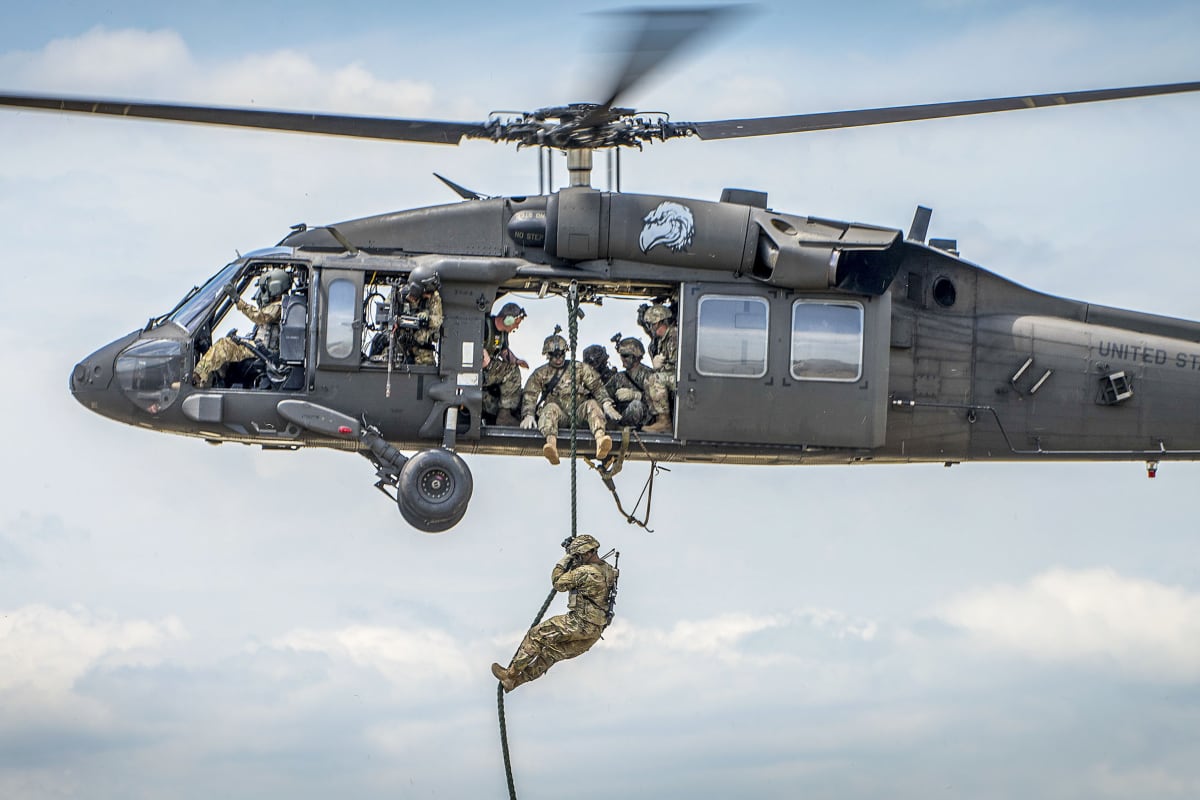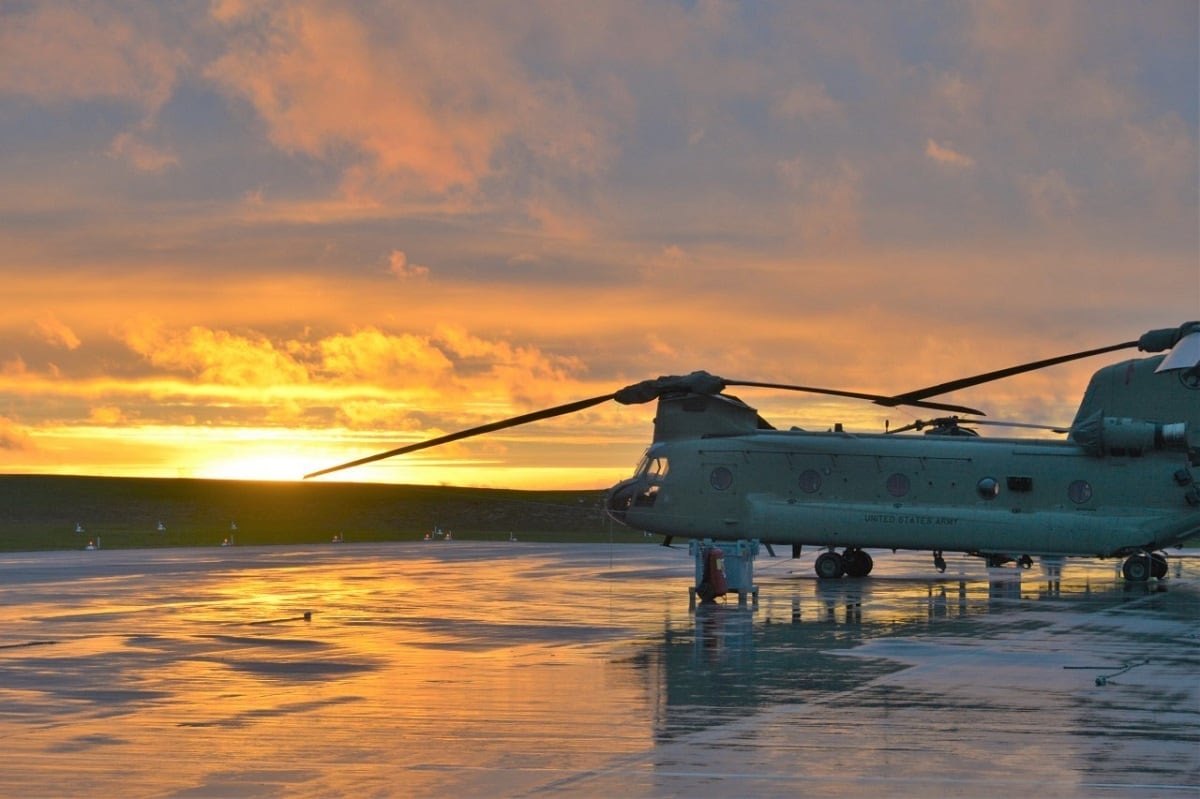WASHINGTON —The Sikorsky-Boeing SB-1 Defiant coaxial helicopter took off from a West Palm Beach, Florida, facility in the early morning on March 21 for its first flight.
The flight has been a long-time coming as the Sikorsky-Boeing team worked through delays for well over a year and a half related to manufacturing issues with the system’s blades. The team hoped to fly by the end of last year but while running the power-train systems test bed, engineers discovered a series of issues that caused them to hit pause on testing.
The team required 15 hours of flawless test results in ground runs before releasing Defiant to the skies.
The helicopter — which is part of the Army’s Joint Multi-Role technology demonstration program aimed at helping the service define requirements for a medium-lift Future Vertical Lift aircraft — took of at 7:47 a.m. and flew for more than 30 minutes. It successfully performed low-speed maneuvers, according to a written statement sent to Defense News from the Sikorsky-Boeing team.
“Today’s flight was a tremendous success and a culmination of a lot of work by the men and women of the Sikorsky-Boeing team DEFIANT team,” they wrote. “So much credit goes to their tireless efforts to get us to where we are today."
The team executing the test flight was “very pleased" with the initial analysis and will further examine the data in the coming days and will schedule additional flights in the near term, the team said.
“At the end of the day, this was never about how quickly we got to the first flight, but rather about providing the U.S. Army with the necessary, robust and relevant data that will enable them to make fully informed decisions as they pursue the Future Vertical Lift program and we’re doing that,” they stated.

The propulsion systems testbed proved to be “tremendous asset," according to the team, which allowed them to test the aircraft extensively before flight to reduce risk.
The flight comes at a critical time as the service is looking to move at warp speed to buy not one but two FVL aircraft — one long-range assault and one attack reconnaissance aircraft — back-to-back to replace its current fleet as part of a huge modernization push.
Under the new Army Futures Command, tasked to develop a modernized force focused on six major priorities, Future Vertical Lift is the third highest priority behind Long Range Precision Fires and Next-Generation Combat Vehicle.
RELATED

Bell’s V-280 Valor tiltrotor is the other demonstrator participating in the JMR program and flew for the first time in December 2017. The aircraft left Bell’s flight test center in Amarillo, Texas, in the fall of 2018 and has been running more advanced flight tests at the company’s Arlington, Texas, facility. It flew 360 miles between the company’s two locations.
The Army’s JMR program is nearly a decade old. The service selected Bell and the Sikorsky-Boeing team to build two demonstrators with the goal to fly in the fall of 2017.
RELATED

The idea is to take what is learned from the JMR program and apply it when crafting requirements for a medium lift FVL aircraft. The program will likely wrap up once the Sikorsky-Boeing team has a chance to put the aircraft through its paces, which will likely take over a year.
Meanwhile, the Army released a solicitation in the fall of 2018 asking industry for designs for a Future Attack Reconnaissance Aircraft, unveiling plans that it will enter a competitive prototyping effort to ultimately buy and field the aircraft.
Sikorsky, which is a Lockheed Martin-owned company, is likely to submit something to the FARA program that fits in between its Raider coaxial experimental aircraft, which has been flying for several years at the company’s West Palm Beach facility — but not without incident — and Defiant, it’s big brother.
Jen Judson is an award-winning journalist covering land warfare for Defense News. She has also worked for Politico and Inside Defense. She holds a Master of Science degree in journalism from Boston University and a Bachelor of Arts degree from Kenyon College.






